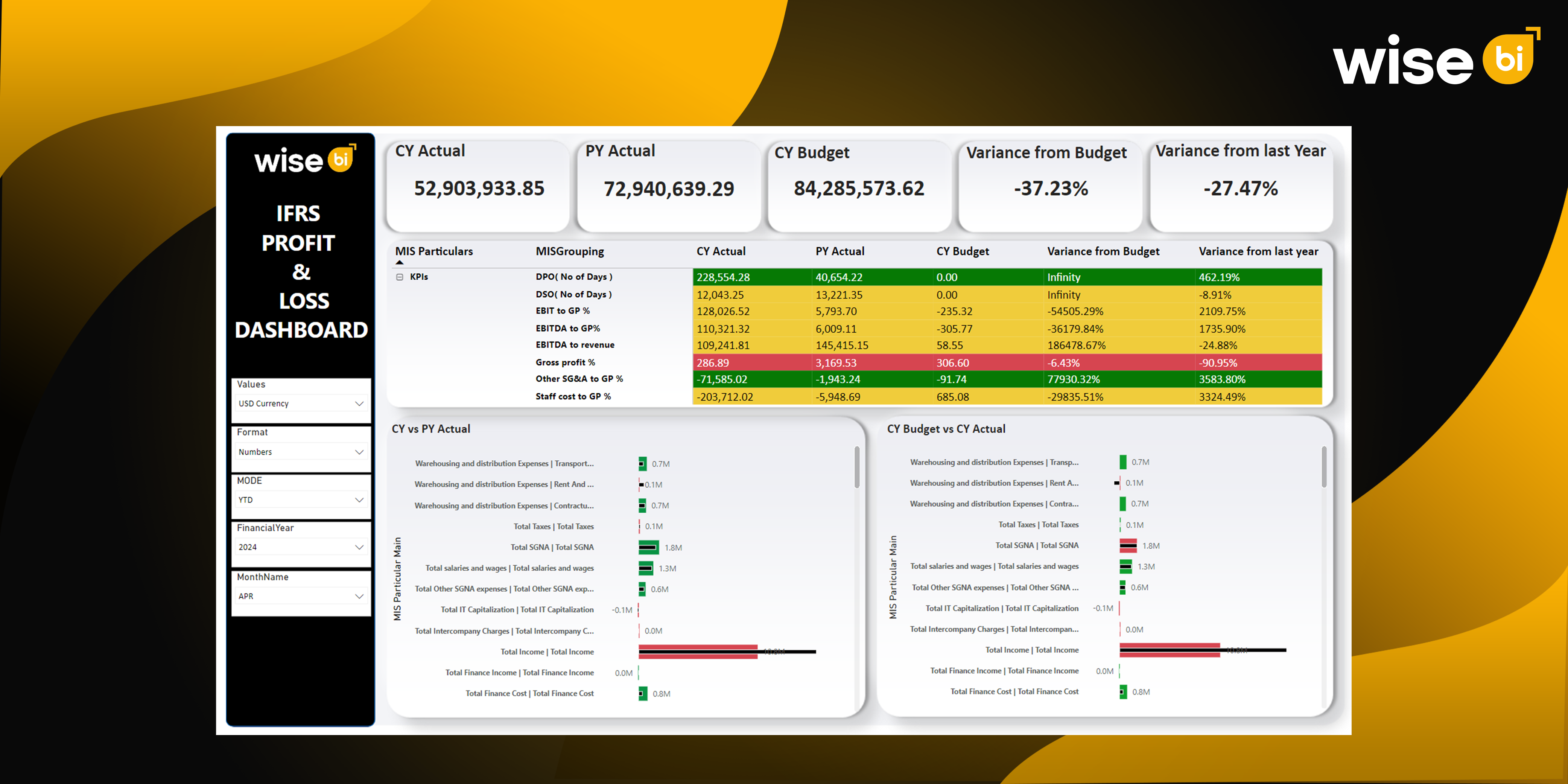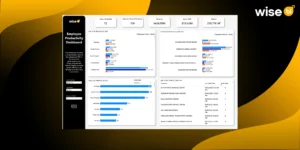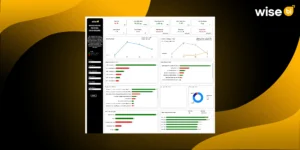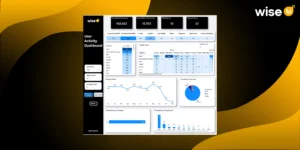BI has emerged as a strategic solution that helps companies who want to use data to improve their operations. Custom BI development applies these insights to the specific needs of a business, which makes this tool more effective for generating accurate analytics. With this knowledge about the different stages of custom BI development, companies can realize the potential of their data and turn it from a simple source of information into a tool that guides the organization and enables their decision-making processes.
What is BI?
Business Intelligence pertains to the processes, tools, and technologies that facilitate the transformation of raw data into useful information that could be used to support effective decision-making. It is the process of collecting, storing, processing, analyzing, and effectively presenting data that helps with decision-making.
In the modern world of big data, BI is the primary tool for companies to gain insights into their processes, markets, and customers to make better decisions and gain competitive advantages. Thus, BI helps companies foresee new opportunities, improve business processes, and improve customer experience, all of which contribute to business success.
Data Collection
Identifying Data Sources: In analyzing the requirements of the custom BI model, the first action is to identify all possible data points. They include an internal structured database, cloud services, social networks, and third-party data sources among others. This projection further highlights the necessity of defining sources of distinct data to ensure the consideration of numerous facets of a business.
Methods of Data Collection: Data can be accessed in forms like Application Programming Interface, web scraping, and direct database access. The method to choose depends on the source of data as well as the amount of data to be analyzed. Effective data collection techniques help to achieve timely and exact data collection results.
Ensuring Data Quality: It is very crucial to ensure that the data collected is of high quality because that determines the quality of the insights to be generated. This entails checking the reliability of the data sources and undertaking various measures to confirm the accuracy and integrity of the data. The application of data quality checks helps to eliminate errors and inconsistencies and thus contributes towards the development of a highly reliable BI system.
Data Preparation
Data Cleaning and Transformation: Raw data is usually noisy in the sense that it may contain errors, repetitions, and inconsistencies. Data curation deals with such problems while data transformation deals with the conversion of data to a usable form. The data verification stage ensures that the data collected is correct and makes sense.
Data Integration: Information, collected from various sources, needs to be consolidated to get the overall picture. This may involve merging sets of data into one data set with a consistent and coherent structure. Notably, the capacity to manage data and data processing to the level of gaining more information and making proper decisions in case of necessity is very significant.
Importance of Data Preparation: The first process is data preparation because this step determines the quality of the BI solution-generated insights. It validates the data and ensures that the quality of data is as required in giving out results for decision-making.
Data Storage
Choosing the Right Storage Solutions: The decision as to which storage to use is important. These include on-site databases, cloud storage, and data warehouses where the conventional has its merits and demerits as compared to the other. It also predetermines the possibilities and ability to increase the volume and diversify the format of the data storage.
Data Warehousing: A data warehouse eliminates the problem of disparate spread-out databases by assembling a very large volume of data. As a form of organizational knowledge management, it encompasses a systematic arrangement that helps in the faster and easier storage and retrieval of data.
Ensuring Data Security: Security from unauthorized individuals as well as attacks on the data is a priority. Other protective measures like encryption and access control must be put in place. Protecting and securing data is one of the fundamental aspects of data management since it involves the handling of vital data.
Data Analysis
Analytical Techniques: Real-life data is analyzed using a variety of approaches categorized into descriptive, predictive, and prescriptive analytics. These techniques analyze the historical data behind performance in a business or organization, forecast its future behavior, and prescribe the right course of action.
Tools for Data Analysis: The data analysis can be accomplished by using several instruments among which are such as SQL, Tableau, Power BI, and several specialized BI tools. It must be pointed out that the type of tool to be used is dependent on the type and the kind of analysis that is being conducted. Good tools help to improve the work of analysis and increase the quality of the result obtained.
Ensuring Accurate Analysis: Thus, the accuracy of the analytical models and the systems that support them needs to be validated and their performance needs to be constantly monitored. This assists in keeping the reliability of the provided insights constant and realistic while providing more actionable Information.
Data Visualization
Importance of Data Visualization: Data visualization is useful in analyzing data since it assists in the presentation of large sets of data in a simple and more comprehensible manner. This especially applies when Visualizations make it easier to trace different patterns within the data as well as the tendencies as well as unusual values.
Tools for Visualization: Many tools such as Tableau, and Power BI, are used to produce dynamic and comprehensible visualizations. Here, these tools bring various features for creating and modifying content to customer’s needs and outlooks.
Best Practices for Effective Visualization: When it comes to the charts, one has to use the right type of chart, use little design elements, and highlight the main message. It assists in passing the message clearly and understandably to the end users/ stakeholders and makes the data useful.
Deployment and Iteration
Implementing the BI Solution: This normally entails a process of assimilation with other working systems, and it must also conform to the business need. The effective integration of the solution into a company means its availability and practical usage by the final user.
Training and Support: Support is another important element emphasizing that getting users proper training is very important. Sustained support guarantees that any problem is solved instantly, and the users can optimally employ the BI solution. Training increases the competence and confidence level of users.
Continuous Improvement: To be more precise, the need for Custom BI development is a continuous process that does not have a clearly defined endpoint. This is done through feedback from the solution’s users as well as constant checking of its performance to make small adjustments that will encourage the improvement of the solution progressively. Continuous improvement provides capabilities to make adaptations based on business requirements to the BI system.
The advantages of developing a custom BI solution
Enhanced Decision Making: Analysed BI solutions give peculiar information to organizations to make the right decision in the shortest time. They provide planned directed information that supports business strategies in an organization in their management.
Increased Efficiency: Overall, the use of automated data gathering and data analysis is effective in enhancing various business processes. Automating certain processes lowers labor intensity and speeds up the flow of information, which improves the efficiency of the operations.
Competitive Advantage: BI implementation in organizations allows them to gain a competitive advantage due to the specific view developed from the customized BI solutions. Custom solutions are aimed at solving particular business problems, so organizations can stand out from the rest of the competitors.
Conclusion
Custom BI development involves a series of stages that transform raw data into actionable insights tailored to a business’s unique needs. From data collection to deployment and iteration, each stage plays a critical role in ensuring the success of the BI solution. By understanding and addressing common challenges, businesses can effectively leverage custom BI development to drive informed decision-making, improve efficiency, and gain a competitive edge.
Embracing custom BI solutions equips businesses with the tools they need to thrive in a data-driven world, unlocking new opportunities and achieving sustained growth. Contact Wise BI for seamless support for your custom BI needs.




